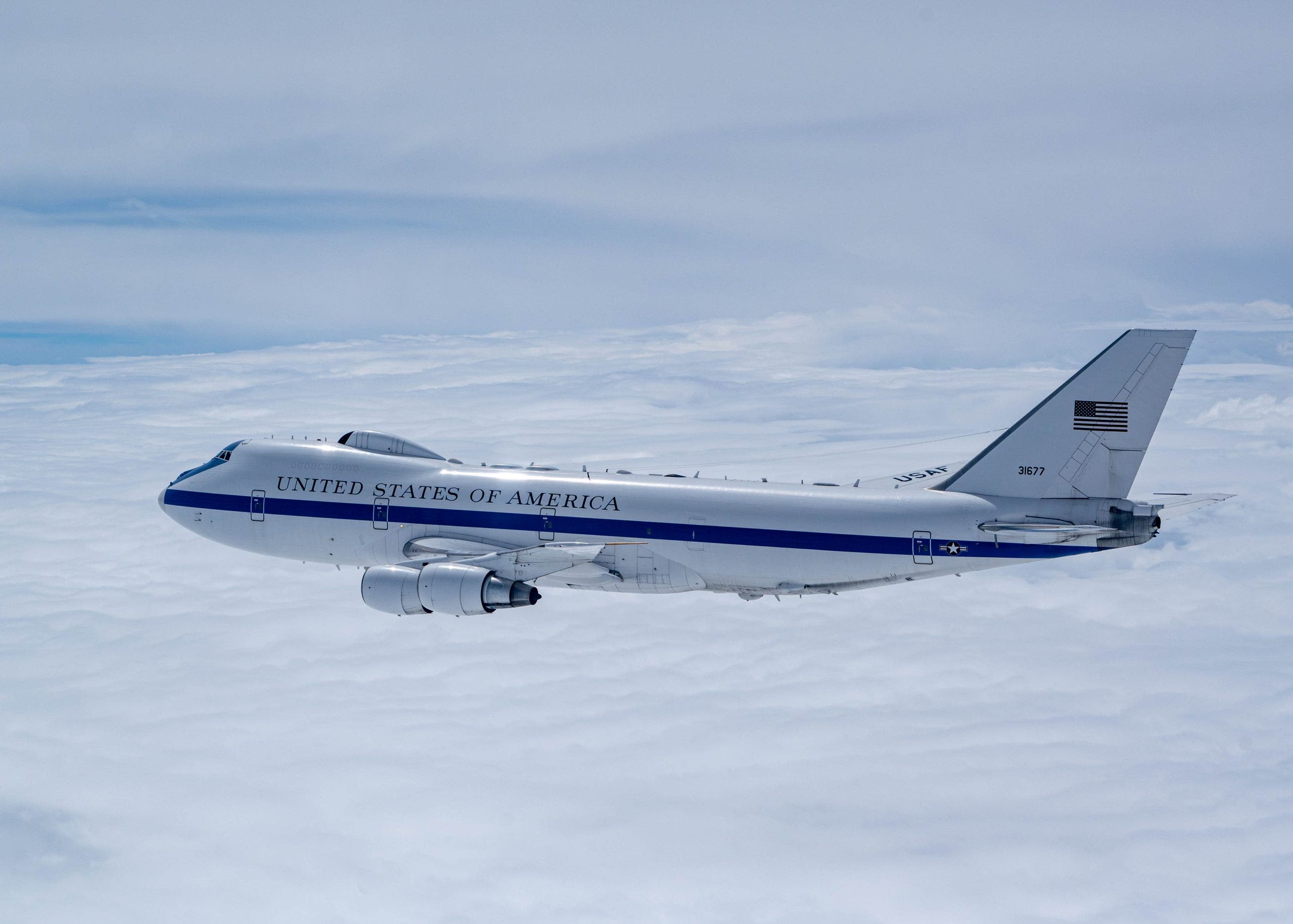What to know about the doomsday plane

As tensions between Israel and Iran continue to escalate, President Donald Trump is considering whether to target Iranian nuclear facilities. Amidst this uncertainty, the president’s U.S. Air Force E-4B Nightwatch, also known as the “doomsday plane,” has attracted attention after reportedly landing at Joint Base Andrews outside Washington, D.C. earlier this week.
While officials from Joint Base Andrews declined to comment on the specific purpose of the Nightwatch’s landing, reports indicate that the plane has since left the Washington area and returned to its home base.
What is the E-4B Nightwatch?
The E-4B is a Boeing 747-200 aircraft that has been militarized and is operated by the U.S. Air Force. Originally designed during the Cold War, the Nightwatch is capable of remaining airborne for up to a week and has the ability to refuel in midair. Equipped with sixty-seven antennas and satellite dishes, the plane can communicate with individuals worldwide.
The U.S. Air Force maintains a fleet of four E-4Bs, each constructed at a cost of $438.76 million. The primary purpose of the E-4B is to serve as a mobile command post, allowing national security officials, the Joint Chiefs of Staff, the President, and the Secretary of Defense to maintain control of the government during a nuclear conflict.
Additionally, the E-4B is utilized for international travel by the Secretary of Defense and provides support for command and control connectivity outside the continental United States.
Why use the E-4B Nightwatch?
The E-4B is essential for national security operations as it can withstand electromagnetic pulses, survive nuclear blasts, and resist cyberattacks. The plane’s capabilities make it a crucial asset for ensuring continuity of government functions during times of crisis.
Current Threats and Potential Retaliation
As tensions between the U.S. and Iran rise, Iranian leaders have threatened retaliation if the U.S. becomes involved in the Israel-Iran conflict. Cybersecurity experts warn that Iran may launch a high-impact cyberattack against the U.S. as tensions escalate.
In response to recent events, President Trump is reportedly considering the use of B-2 Spirit stealth bombers to deliver GBU-57 Massive Ordnance Penetrators, also known as “bunker busters,” to target Iran’s well-fortified Fordow nuclear facility. This facility is believed to be deeply buried below mountainous rock, making it a challenging target.
While Israel has already targeted Iranian military and nuclear facilities, Iran retaliated by striking Soroka Hospital, the largest hospital in southern Israel, with a ballistic missile, causing significant damage.
As the situation continues to unfold, the role of the E-4B Nightwatch remains crucial in ensuring the continuity of government operations and national security in the face of escalating tensions in the Middle East.




